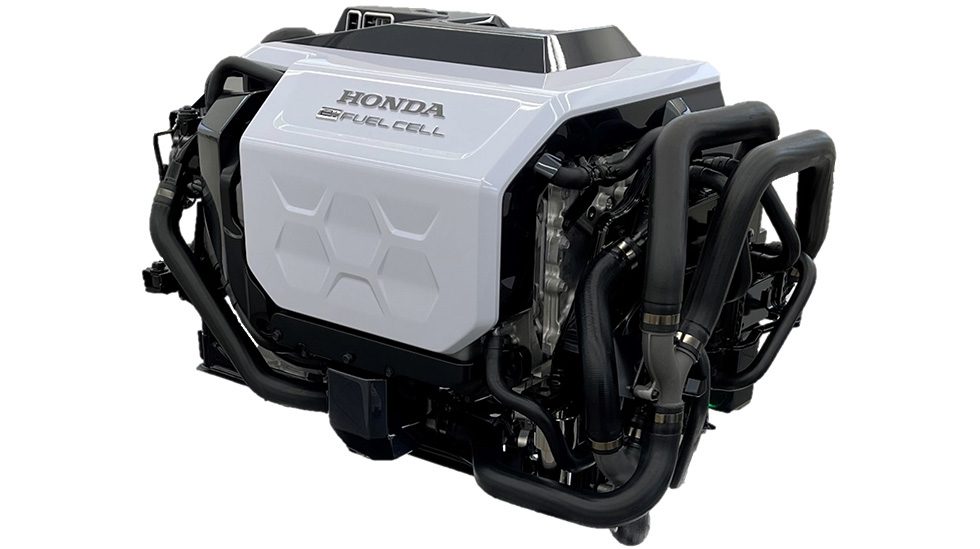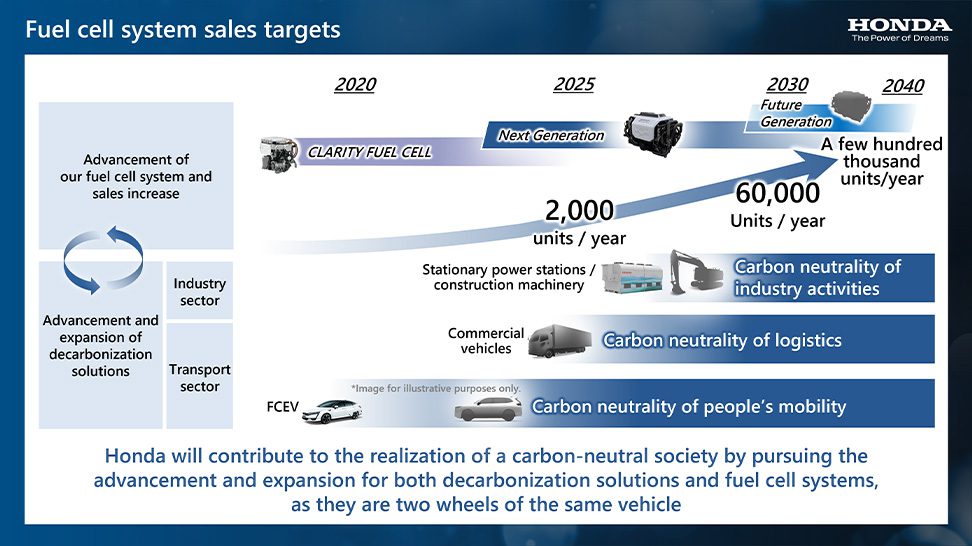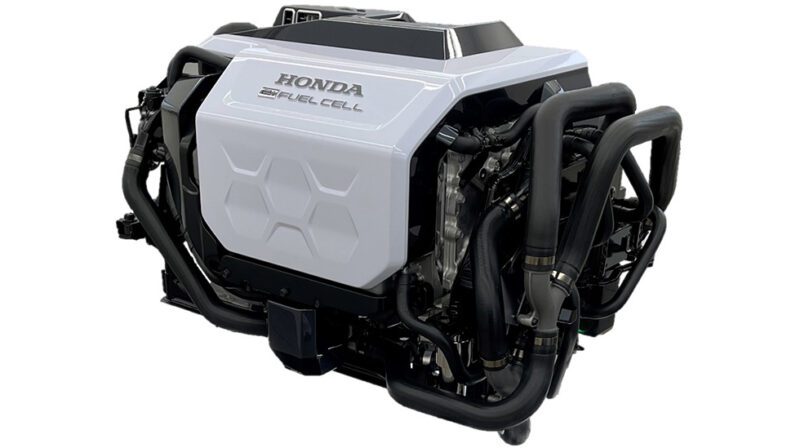Japanese automaker Honda has announced that it is expanding its hydrogen business alongside a promise to “continue electrifying” its line-up of vehicles.
Honda held a press briefing on its hydrogen business initiatives late last week in which the company confirmed it will “not only continue electrifying its products but also take a proactive approach to increase the use of hydrogen as an energy carrier and strive to expand its hydrogen business.”
Core among Honda’s ambitions is the further advancement of the next-generation fuel cell system being developed in partnership with American automotive giant General Motors (GM).

Specifically, Honda aims to more than double the durability and reduce the cost to one-third that of the hydrogen fuel cell system installed in the 2019 Honda Clarity Fuel Cell, which offered a driving range of around 580 kilometres.
After achieving these improvements in partnership with GM, Honda will plough on with its research into future fuel cell technologies with the goal of doubling the durability and halving the cost of the newly reduced levels.
Honda is also planning to begin external sales of its fuel cell system, with a goal of selling 2,000 units each year. By 2030, however, Honda is hoping to expand sales to 60,000 units, and to “a few hundred thousand” units per year by the second half of the 2030s.

As part of Honda’s goals of reaching carbon neutrality for all its products and corporate activities by 2050 – which includes a target of “zero environmental impact” across the entire product lifecycle – Honda is positioning hydrogen alongside electricity as two of the “high-potential energy carriers”.

Relying on renewable energy to generate green hydrogen – a decision which, according to Honda, makes “it less susceptible to fluctuations in power generation due to seasonality and weather conditions” – Honda is looking at transporting green hydrogen by land, sea, and pipeline.
Honda is also planning to expand the applications of its fuel cell systems beyond Honda FCEVs to various internal and external applications. Planned applications include heavy-duty trucks and commercial vehicles, stationary power stations, and construction machinery.
Joshua S. Hill is a Melbourne-based journalist who has been writing about climate change, clean technology, and electric vehicles for over 15 years. He has been reporting on electric vehicles and clean technologies for Renew Economy and The Driven since 2012. His preferred mode of transport is his feet.

